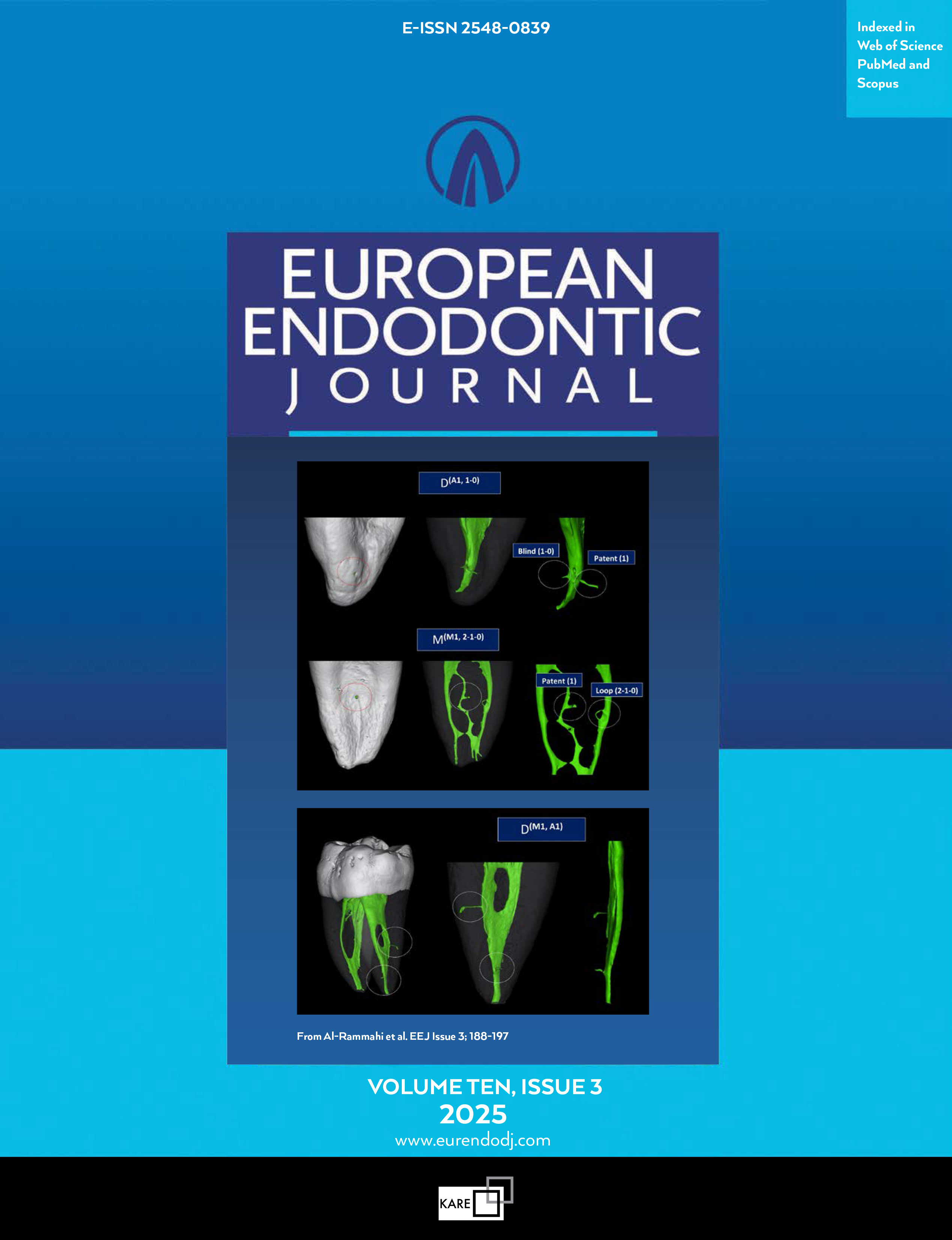Metrics
2023 IMPACT FACTOR
5 year Impact Factor
Eigenfactor
2023 CiteScore
Journal Citation Reports (Clarivate, 2024)(Dentistry, Oral Surgery & Medicine (Science))
Examining the Physicochemical Composition of Three Bioceramic Putties for Endodontic Use
Daniel Chavarria-Bolaños1, Takashi Komabayashi2, Jose Vega-baudrit3, Esteban Ulate1, Reinaldo Pereira-Reyes3, Mauricio Montero-Aguilar11Dentistry Graduate Program, University of Costa Rica, San José, Costa Rica2Graduate Endodontic Program, University of North Carolina at Chapel Hill Adams School of Dentistry, North Carolina, USA
3National Nanotechnology Laboratory, San José, Costa Rica
Objective: This study aimed to address the lack of comparative analyses of newly developed bioceramic materials by examining the chemical composition, thermodynamic profile, and microscopic surface features of three bioceramic putties: EndoSequence BC Root Repair Material Fast Set Putty (ESRRM-FS), BIO-C Repair (BCR), and Cera Putty (CP).
Methods: Samples of each of the three bioceramic putty obtained directly from manufacturers were prepared for analysis of physicochemical composition and microscopic features by differential scanning calorimetry (DSC), thermogravimetric analysis (TGA), scanning electron microscopy (SEM) imagery, and energy-disper-sive X-ray spectroscopy (EDS). The data obtained was qualitatively and statistically analysed. Statistical signif-icance was determined at p≤0.05.
Results: DSC analysis indicated a standard polymeric vehicle for BCR and CP, coinciding with the polyethene glycol (PEG) thermal profile; the polymeric vehicle in ESRRM-FS remains to be identified. The material with the highest heat capacity was CP (p<0.05), followed by ESRRM-FS and BCR. TGA revealed an inflexion point at 394.12 ºC for ESRRM-FS, which may correspond to the mass loss of dihydroxylation of calcium hydroxide. A more homogenous structure was observed in scanning electron microscopy (SEM) images for ESRRM-FS. EDS analysis indicated BCR had minimal amounts of aluminium (2.06±0.44%) and a lower percentage of cal-cium than ESRRM-FS (9.11±1.38% vs. 11.3±0.87%). CP was composed of aluminium (49.35±7.01%), carbon (30.65±5.62%), and oxygen (16.75±2.44%); no silicon was identified. ESRRM-FS had no aluminium present and the highest calcium percentage (11.3±0.87%) (p<0.05).
Conclusion: BCR is a Portland cement-derived material with a lower percentage of calcium than ESRRM-FS and minimal amounts of aluminium. CP is a monocalcium aluminate cement, mainly composed of aluminium, carbon, and oxygen. ESRRM-FS is a biphasic material with the highest calcium percentage among all materials studied and no aluminium.
Manuscript Language: English
(368 downloaded)


